

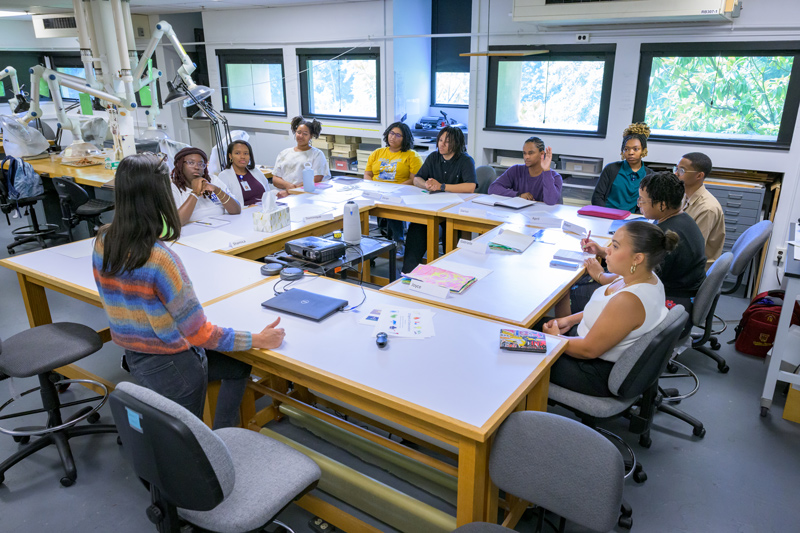
A new generation of conservators
Photos by Evan Krape August 15, 2023
UD summer art conservation program helps inspire and increase diversity in the field
The field of art conservation is sometimes an enigma, even to students studying visual art. During the summer of 2023, the University of Delaware Department of Art Conservation and Winterthur Museum Garden & Library, in collaboration with the Alliance of HBCU Museums and Galleries, welcomed 10 students and recent graduates from historically black colleges and universities (HBCUs) across the country to a program designed to introduce them to the field, while providing direct experience with art conservation projects and the opportunity to build a network of professional peers.
The Winterthur/University of Delaware Program in Art Conservation (WUDPAC) and the Alliance of HBCU Museums and Galleries launched the first version of Introduction to Practical Conservation in 2017. One of the country’s top conservation graduate programs, WUDPAC is in a unique position to offer this initiative with equipment, well-lighted workspaces, and faculty in place.
The program has varied in length and size since it began six years ago, but this year a grant from the Bank of America Charitable Foundation allowed UD to invite more than twice the number of students, with the ultimate goal of increasing representation in the field.
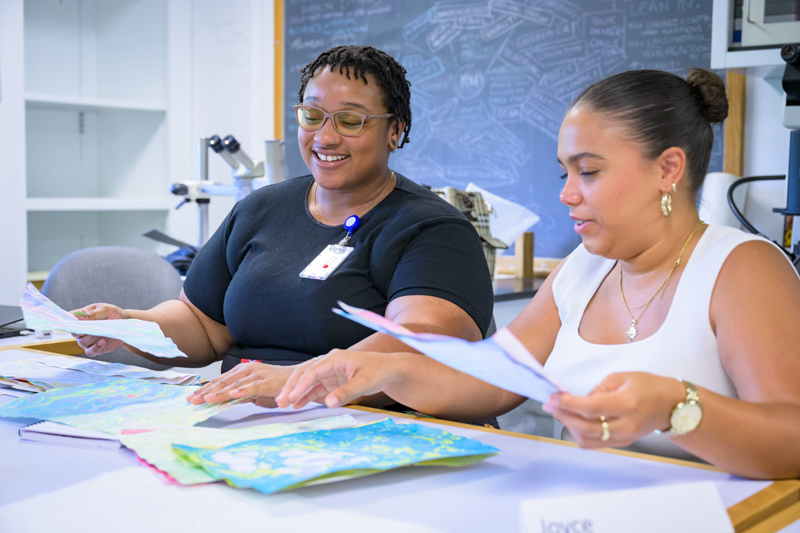
This year’s program began in late June with two weeks of lectures and hands-on sessions at Winterthur in areas including methods of examination and treatment for paintings, objects, photographic materials, textiles, furniture, works of art on paper, in addition to preventive conservation. The students then completed four-week internships at Winterthur or one of the partner institutions: Brooklyn Museum, Fisk University, the Smithsonian American Art Museum and the Yale University Art Gallery.
Program coordinator Nina Owczarek, assistant professor and objects conservator, explains the program’s effect: “It’s about the students finding meaningful work and meaningful careers, and if they stay in the museum world, they will have more connection to and understanding of conservation. The program also creates a valuable peer network for students as they start their careers.”
That impact is already evident. Matthew Fields, a visual artist and assistant professor of art at the University of Arkansas at Pine Bluff (UAPB), was part of the first cohort of students and returned this year as a visiting speaker. He is encouraging his current and future students to apply.
His experience learning about conservation changed how he creates. “The program impacted the level of work I want to make as well as the longevity of my work. Having a conservation background now, I think about the materials I choose and what the work will look like in 25 years, how different chemicals will react to each other, and even the way I handle and transport my artwork.”
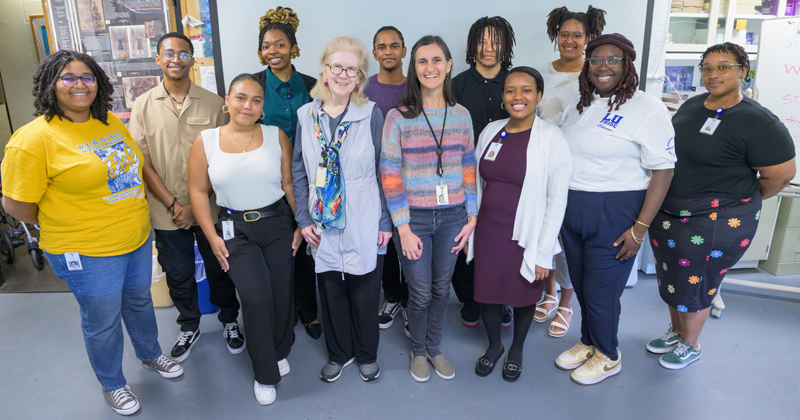
Fields recommended the program to his own student Dorian Henry, a 2023 participant, who interned at Winterthur to learn how conservators and curators collaborate on preparing exhibitions. “It’s really important to bring what we learn back to HBCUs. We don’t usually get these opportunities,” he said. When Henry returns to UAPB this fall he and Fields will work on caring for the school’s collections.
Dominique V. Goden hopes to leave the program with a clear picture of her next steps toward working in textile conservation. Goden, who comes from Riverview, Florida, and has degrees from the University of Tampa and Florida State University, has been working in textiles and fashion since high school. After the two-week conservation fundamentals course, she stayed at Winterthur for her internship and worked on the museum’s upcoming exhibition of African-American designer Ann Lowe.
“She is one of America’s best kept secrets,” Goden said. Although Lowe was a sought-after designer for elite couture in the 1950s and created Jacqueline Kennedy’s iconic wedding gown, Lowe’s story was almost lost. Kennedy declined to name the designer to the press.
“She lost the opportunity for exposure that designers count on, but now we’re bringing her pieces together to show people how much she contributed to high society and fashion,” Goden said.
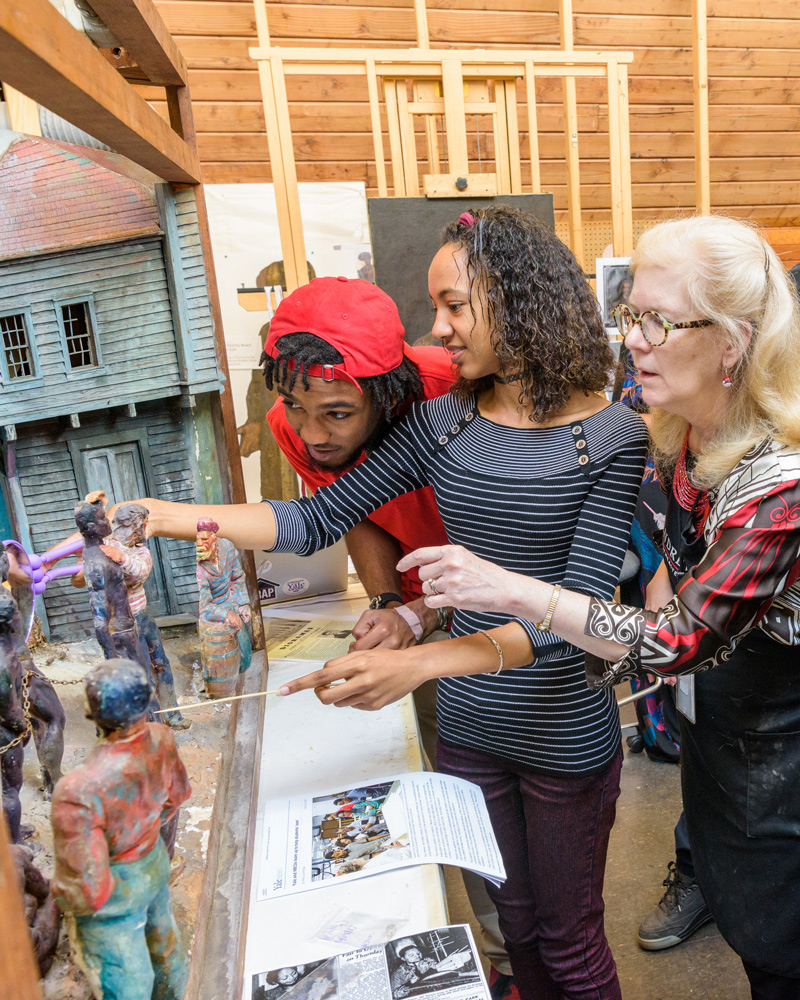
Although participants come with a background in art or science, many don’t realize all that is possible in the conservation field. Taryn Nurse, a 2017 and 2022 participant, began at Fisk University in a pre-med track with a double major in art, but after a hospital internship realized she did not want to pursue a medical career. “I didn’t know how art and science could intersect, but the program showed me it was possible. I saw skills from both fields come into play, and I left the program feeling confident that this is a field I can be successful in.”
Nurse stayed in contact with faculty members, who encouraged her to apply for UD’s graduate program. She will begin WUDPAC this fall with the goal of working in natural history conservation.
The need for representation
Museum professionals of the 1950s and earlier were mostly white men and some women who weren’t expected to earn an income. As a graduate student in New York City in the 1960s, Joyce Hill Stoner, the Edward F. and Elizabeth Goodman Rosenberg Professor of Material Culture, and coordinator of the first three Introduction to Practical Conservation workshops, saw this firsthand: “I knew of curators who earned just one dollar a year. They were from wealthy families, and when you were from a wealthy family you didn’t need the museum to pay you. You felt privileged to work in a museum.”
Surveys conducted in the mid 2010s by the Mellon Foundation and the American Institute for Conservation verified that not enough had changed since Stoner’s time as a student: American museums were overwhelmingly staffed by low-paid white women, and steps needed to be taken to increase diversity and representation and decrease salary discrepancies.
Owczarek explained the negative impact on artwork and objects: “If you don’t have people from diverse backgrounds doing conservation treatments, then you’re not necessarily taking in the whole picture. You’re not necessarily considering all of an artifact’s needs in a cultural context.”
Fields added, “African-American and minority cultures are often overlooked or passed by unless they are championed by the people that lived them. Historically in America, those histories are not preserved correctly or treated with an appropriate ethos of care.”
By partnering with organizations like Alliance of HBCU Museums and Galleries and with financial support from institutions such as Bank of America, UD and Winterthur will continue to address inequities and help preserve art and history of all Americans.
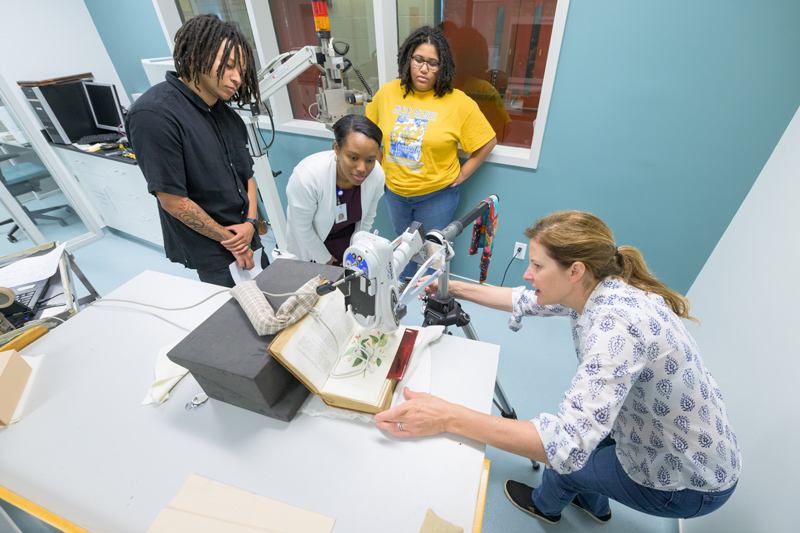
Contact Us
Have a UDaily story idea?
Contact us at ocm@udel.edu
Members of the press
Contact us at 302-831-NEWS or visit the Media Relations website

